ASPICIS.ETERNOS.VENERANDE.MATRIS.ALUMNOS.
DOCTRINA.EXCELSOS.INGENIOQ.VIROS.
UT.NUDA.CERVICE.CADANT.ANTE.[ORA.PARENTIS.
SUPPLIC]ITER.FLEXO.PROCUBUERE.GENU.
IUSTITIA.PIETAS.VINCIT.REVERENDA.NEC.ULLUM.
POENITET.ALTRICI.SUCCUBUISSES.SUE.
You see how the eternal students of the Venerable Mother
Men exalted in learning and in genius
Fall forward, suppliantly with bared head
And bended knee, before [the face of their parent].
With the help of Justice, reverend Piety prevails
And none regrets having submitted to his foster mother.1
1 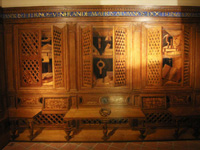 Fig. 5.1. Northwest wall, Gubbio studiolo.ASPICIS, the first word of Veterani's distich in the Gubbio studiolo, has been translated as "see how"; ad-spic-ere signifies "to look at."2 For the late quattrocento this term also evoked associations to meditation, astronomy, and divination that might elude modern translation. In medieval prayer, aspectus represented a concentrated state of "inner seeing" that drew on the sensuousness of physical ornament for its emotional focus (affectus).3 Though not commonly used, the astronomical connotations persist; for example, the various meanings of aspect include "the relative positions of the heavenly bodies as they appear to an observer on the Earth's surface at a given time." Aspect also signifies "the way in which the planets, from their relative positions, look upon each other" as well as "their joint look upon the Earth."4 The interplay of geometry, optics, and spirituality here is transparent.
Fig. 5.1. Northwest wall, Gubbio studiolo.ASPICIS, the first word of Veterani's distich in the Gubbio studiolo, has been translated as "see how"; ad-spic-ere signifies "to look at."2 For the late quattrocento this term also evoked associations to meditation, astronomy, and divination that might elude modern translation. In medieval prayer, aspectus represented a concentrated state of "inner seeing" that drew on the sensuousness of physical ornament for its emotional focus (affectus).3 Though not commonly used, the astronomical connotations persist; for example, the various meanings of aspect include "the relative positions of the heavenly bodies as they appear to an observer on the Earth's surface at a given time." Aspect also signifies "the way in which the planets, from their relative positions, look upon each other" as well as "their joint look upon the Earth."4 The interplay of geometry, optics, and spirituality here is transparent.
2In the third volume of the Book of Life, a treatise on astrobiological medicine written across the 1480s, Marsilio Ficino compares the celestial bodies to "eyes" that transmit the generative spirit—or quintessence—of the worldly soul (anima mundi) to the Earth by rays of light according to Euclidean geometry.5 These rays were believed to enter and influence a person's spirit through the window of the eye.6 Like the providential vision of Nicholas of Cusa's all-seeing God, the spirit of the worldly soul could penetrate to the innards of animals and the earth itself, transmuting their hidden contents into precious metals, stones, and gems that assist humankind in the art of living well.7 Since the influence of heavenly rays could be both harmful and beneficial, they required careful mediation through medicine, architecture, and cosmological images.8 Ficino's warnings on this matter are inlaid in Leonardo's subsequent comparison of doctors and architects: "Just as doctors . . . should understand what man is, what life is, what health is . . . and in what manner a balance and concordance of elements will preserve health, while their discordance will destroy it . . . [t]he same is necessary for an invalid building, that is, a doctor-architect who has a good knowledge of what a building is and from which rules good building derive."9
3 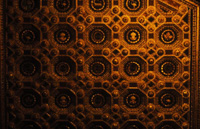 Fig. 5.2. Ceiling of Urbino studiolo in late afternoon light.In 1462, Ficino decorated the Medici villa at Careggi (home to the Platonic Academy) with astrological signs,10 an ornamental scheme also found in frescoes of the Sala dei Mesi at the Palazzo Schifanoia, Ferrara (1470),11 and in ceilings of the Medici palace at Florence (1456), whose lapis lazuli and gold-leaf ornament offered admirers a sparkling abstraction of the starry sky.12 We can imagine a similar heavenly apparition in the gold and sapphire ceiling of the Urbino studiolo, especially when illuminated by a setting sun or candlelight. The ceiling of the Gubbio studiolo, meanwhile, represents an even more subtle cosm(et)ology.
Fig. 5.2. Ceiling of Urbino studiolo in late afternoon light.In 1462, Ficino decorated the Medici villa at Careggi (home to the Platonic Academy) with astrological signs,10 an ornamental scheme also found in frescoes of the Sala dei Mesi at the Palazzo Schifanoia, Ferrara (1470),11 and in ceilings of the Medici palace at Florence (1456), whose lapis lazuli and gold-leaf ornament offered admirers a sparkling abstraction of the starry sky.12 We can imagine a similar heavenly apparition in the gold and sapphire ceiling of the Urbino studiolo, especially when illuminated by a setting sun or candlelight. The ceiling of the Gubbio studiolo, meanwhile, represents an even more subtle cosm(et)ology.
4In a chapter dedicated to making a figure of the universe, Ficino recommends that his readers set up, deep inside their houses, a little room decorated with figures and colors that evoke the generative and protective influences of the heavens. Green, he writes, represents Venus and the Moon, whose moist natures are "appropriate to things of birth," such as thoughts. The Apollonian sun is represented by gold, and the jovial influence of Jupiter—vital, Ficino emphasizes, to counteract Saturn's melancholy—is captured by sapphire, the color of lapis lazuli and ultramarine. Also effective against Saturn's black bile are coral (red) and chalcedony (milky gray). Elsewhere in the Book of Life, Ficino associates purple with a safer, diluted form of Saturn's humor that, like the influence of Mars, may be used as a homeopathic pharmakon.13 To assist in contemplation and judgment, Ficino recommends that these colors be worn as clothing and applied in architectural ornament.
5 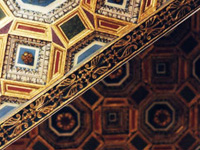 Fig. 5.3. Detail of ceiling, Gubbio studiolo.Each of these colors—gold, green, blue, red, purple, and gray—is found in the ceiling of the Gubbio studiolo, whose interlocking geometries evoked for its quattrocento occupants a well-tempered distribution of divine influences.14 To draw the worldly spirit into oneself required the purgation of one's inner spirit, according to the virtuous images and texts ingrained in the walls of the studioli.15 While filtering the deleterious aspects of the heavens and one's own character, the architecture of the Gubbio studiolo embodied a garden of earthly experience and a mechanism for divine contemplation. Whether metaphorically lifted by the machina of aedificatio or elevated by the virtues and colors of architectural ornament, contemplation was characterized as an ascent from the earthly body and was accounted for in physiological terms. Following the pneumatic model of Avicenna, Ficino writes: "The blood . . . is affected by a natural power, which thrives in the liver and stomach. The thinnest part of the blood flows into the fountain of the heart, where a vital power flourishes. The spirits [pneuma] of the mind are created there, and, as I shall show, there the ramparts of Minerva [sensual wisdom] rise. In these, an animal force, that is for feeling and moving, dominates. That is why contemplation is so much more than an obedience of the senses."16 Instead of "see how," then, kindred terms such as contemplate or consider reflect more accurately the astrological attributes of aspicere and, more generally, the astrobiomechanical role of the studioli imagery and architecture in the contemplative practices of the Montefeltro dukes—practices that were at once ancient, medieval, and unprecedented.
Fig. 5.3. Detail of ceiling, Gubbio studiolo.Each of these colors—gold, green, blue, red, purple, and gray—is found in the ceiling of the Gubbio studiolo, whose interlocking geometries evoked for its quattrocento occupants a well-tempered distribution of divine influences.14 To draw the worldly spirit into oneself required the purgation of one's inner spirit, according to the virtuous images and texts ingrained in the walls of the studioli.15 While filtering the deleterious aspects of the heavens and one's own character, the architecture of the Gubbio studiolo embodied a garden of earthly experience and a mechanism for divine contemplation. Whether metaphorically lifted by the machina of aedificatio or elevated by the virtues and colors of architectural ornament, contemplation was characterized as an ascent from the earthly body and was accounted for in physiological terms. Following the pneumatic model of Avicenna, Ficino writes: "The blood . . . is affected by a natural power, which thrives in the liver and stomach. The thinnest part of the blood flows into the fountain of the heart, where a vital power flourishes. The spirits [pneuma] of the mind are created there, and, as I shall show, there the ramparts of Minerva [sensual wisdom] rise. In these, an animal force, that is for feeling and moving, dominates. That is why contemplation is so much more than an obedience of the senses."16 Instead of "see how," then, kindred terms such as contemplate or consider reflect more accurately the astrological attributes of aspicere and, more generally, the astrobiomechanical role of the studioli imagery and architecture in the contemplative practices of the Montefeltro dukes—practices that were at once ancient, medieval, and unprecedented.
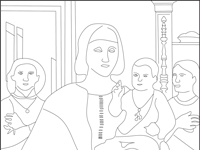 Fig. 5.4. The Madonna of Senigallia, after Piero della Francesca. Fig. 5.4. The Madonna of Senigallia, after Piero della Francesca.Extended Caption 21 |
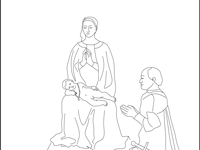 Fig. 5.5. Detail from Piero della Francesca's Brera Altarpiece. Fig. 5.5. Detail from Piero della Francesca's Brera Altarpiece.Extended Caption 21 |
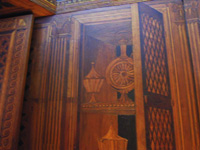 Fig. 5.6. Glass mirror and vessels, Urbino studiolo. Fig. 5.6. Glass mirror and vessels, Urbino studiolo.Extended Caption 21 |
|
Notes
Note 1: Raggio, Gubbio Studiolo, 93. back
Note 2: Oxford English Dictionary, s.v. "aspicis." back
Note 3: In his Sermons on the Song of Songs (I.V. #75), Bernard of Clairvaux describes the mental and emotional discipline necessary for aspectus (Carruthers, Craft of Thought, 84). Also 303n83: "Recall that memory is always described as a type of affectus and inner aspectus." back
Note 4: Oxford English Dictionary, s.v. "aspect." back
Note 5: For Ficino's distinctions between soul and spirit, see Book of Life, 3.1–4; Tomlinson, Music in Renaissance Magic, chap. 4; and Summers, Judgment of Sense, 108–9. "The effects of the heavens work especially well through a straightness of the rays and the angles." Book of Life, 3.18.145. back
Note 6: "The organs sense nothing but are rather channels through which a 'certain power of the soul' senses things. By this 'certain power of the soul" Ficino understands Plato to mean a sensus communis, upon which all sensation converges. Ficino joins a long tradition of comparing the common sense to the center of a circle, joined by lines to its circumference." Summers, Judgment of Sense, 108–9. An empathy of common sense binds these centers together, evoking Cusa's image of God, whose center is "everywhere" (in the sensus communis located in each human being) and whose circumference, being unlimited, is "nowhere." back
Note 7: In animals the rays were believed to produce medicinal bezoar stones: "The stones which are born in animals, and not in weak ones but snakes, roosters, and swallows, are as effective as other stones. Like stones born in the earth, which refer back to their stars, these stones refer back to stars, too, through their animals." Ficino, Book of Life, 3.15.135, 3.12.123. back
Note 8: According to Ficino, a healthy spirit is a combination of solar, venereal, jovial, and mercuric humors, with little influence from Saturn, Mars, or the Moon, "or it would be stupid (Saturn), furious (Mars), and obtuse (Moon)." Book of Life, 3.11.118. back
Note 9: As cited by Galluzzi, Renaissance Engineers, 238. back
Note 10: By this path of inquiry, Ficino followed Albertus Magnus, Roger Bacon, and Pietro d'Abano, while complementing the efforts of his contemporary Guglielmo Raimondo de Moncada (Flavius Mithridates), who composed a treatise on astrological influences for Duke Federico in 1481 and later instructed Pico della Mirandola in cabalistic practices at Perugia in 1486. At Pico's suggestion, Ficino composed the third book of the Book of Life (1489), which harmonized astrobiological notions of Arab and Jewish doctors with Christian tenets. A wealth of the authors and works cited by Ficino were present in the ducal library. back
Note 11: Composed to celebrate Borso d'Este's elevation to duke, this expansive fresco cycle is arranged according to the twelve months, in three horizontal levels. The realm of the gods is depicted above, with human affairs shown (according to season) below, and intermediating images of the zodiac between. Quintilian Institutio oratoria 11.2.22, and Publicius, Art of Memory, 19, include the zodiac as a source for memory images. back
Note 12: These admirers included Filarete; see Raggio, Gubbio Studiolo, 105. back
Note 13: Citing Ptolemy's Centiloquio, Ficino says that the influences of Mars and Saturn, like certain poisons, could be used beneficially in moderate doses. Book of Life, 3.2.93. back
Note 14: Ficino's comments on colors reflect interests shared with the Urbino court and suggest his familiarity with the studioli. They are culled from pages 1.6.10, 3.12.123, and 3.19.153 of the Book of Life. See Raggio, Gubbio Studiolo, 105, and Wilmering's rigorous examination in Gubbio Studiolo, 2:163–75. back
Note 15: "Everything we have been talking about comes down to this, that our spirit, when it is correctly prepared and cleansed through the things of nature, can receive from the spirit of worldly life a great deal through the rays of the stars." The spirit, Ficino also writes, is often infected by "the filth in your soul, on your skin, on your clothes, in your house, or in the air." Book of Life, 3.11.115, 3.4.96. back
Note 16: Ficino, Book of Life, 1.2.5. back